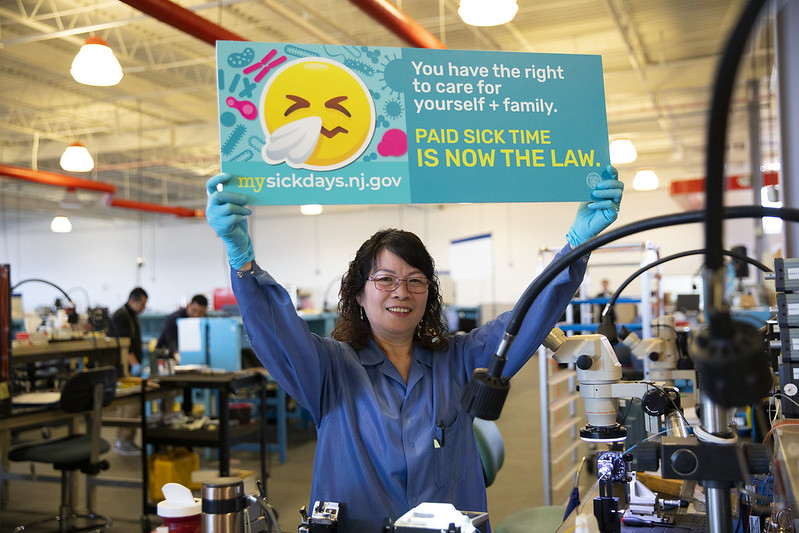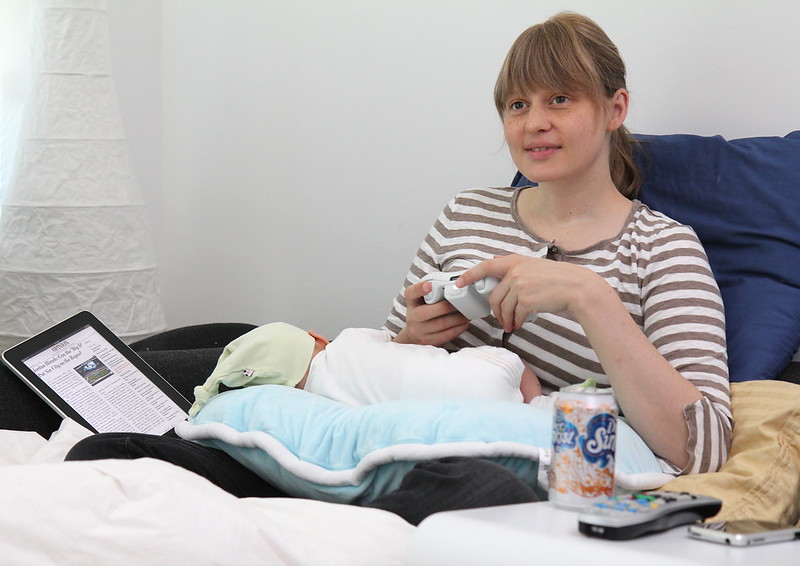It’s now a matter of weeks until Election Day, and women’s votes are more crucial this year than ever. We must have not only the will, but also a firm grasp of what we need to hold candidates at all levels accountable for policies that work toward social justice and equity for women.
What’s at Stake is a new bi-weekly series of abbreviated excepts from Ms. money editor Martha Burk’s book “Your Voice, Your Vote 2020-2021.” Using an intersectional approach of gender, race and class to issues ranging from health care to Social Security, violence, pay equity, LGBTQ rights, reproductive rights, the ERA and everything in between, Your Voice, Your Vote is a must for arming activists with the facts for meaningful change. A signed copy benefiting Ms. can be ordered here.
Paid Sick Leave
There are no federal laws guaranteeing sick leave for employees in the United States. Whether sick leave is granted is entirely up to employers, except in a few local or state jurisdictions where laws are on the books. Thanks to an Obama executive order, federal contractors must allow employees to earn up seven days or more of paid sick leave annually.

Access in the U.S. varies widely by income. Seventy-six percent of families on the lowest fourth of the scale—the majority headed by women of color—have zero paid sick leave. Slightly over half of families in the middle lack leave.
Even for families in the top fourth, 15 percent do without paid sick leave. This puts us in stark contrast to much of the world—145 countries provide paid sick days.
Due to COVID-19 a smidge of temporary relief was granted in March, giving federally funded sick leave, but only to those in companies employing 51-499 people with COVID related illness. Some 60 million workers—roughly half the nation’s full-time workforce—were carved out of the law’s protections. Even this paltry help expires December 31, 2020 unless there’s further action.
A bill called the Healthy Families Act has been introduced in every Congress since 2004. If it ever passes, it will require companies with 15 or more employees to provide minimum paid sick leave of seven days annually, prorated for part timers. But fewer than half of Congress members have co-sponsored the bill, languishing in committee with no hearings scheduled.
Pregnancy and Maternity Leave
Like sick leave, there is no federal mandate that companies grant paid pregnancy or maternity leave. Still, there is a little more legal protection for pregnancy compared to sickness.
The Pregnancy Discrimination Act (passed in 1978) says if a woman is temporarily unable to perform her job due to pregnancy, the employer must treat her the same as any other temporarily disabled employee —like someone who is injured or has had a heart attack.
So if the guys in the executive suites get leave time to recover from a coronary, the girls in the word processing department must be treated equally when it comes to pregnancy, since both conditions would be considered temporary disabilities.
But if employers opt not to provide any paid time off for temporary disability, both workers are out of luck.

By way of comparison of the 36 member countries of the Organisation for Economic Co-operation and Development (OECD), from North and South America to Europe and Asia-Pacific as well as emerging countries like Mexico, Chile and Turkey, the U.S. stands alone with no national maternity leave.
Family and Medical Leave
The United States has had unpaid family leave since 1993, when President Clinton signed the Family and Medical Leave Act (FMLA) after eight years of Congressional debate and two vetoes by President George H. W. Bush.
FMLA grants 12 weeks of unpaid leave for workers who work for a company with 50 or more employees—meaning less than a fifth of new mothers and only about half of the U.S. workforce overall qualifies.
Separate from maternity or paternity leave and ordinary sick leave, it can only be used for serious health conditions of the employee; care of a seriously ill spouse, child or parent; or for care, birth or adoption of a child. But even for those whose workplaces are mandated to grant the benefit, many employees cannot afford to take it.
Once again, the U.S. lags behind the world. Out of 193 countries in the United Nations, only a handful lack a national paid parental leave: New Guinea, Suriname, a few South Pacific island nations—and the United States.
By contrast, in Sweden, parents share 480 days of paid parental leave per child, at 80 percent of the stay–at–home parent’s salary. There are extra incentives to encourage men to take their share.
A new bill, the Family Medical Insurance Leave Act, introduced by Senator Kirsten Gillibrand (D-N.Y.) would create a system of paid family leave financed by a payroll tax evenly split between employers and employees. Both would pay into a giant insurance pool—much like Social Security—and the wage replacement would come from that pool when needed.
A good idea—but for now, passage seems a long way off. Gillibrand’s bill has just 34 co–sponsors. (Where are the other 66 members of the Senate?) Companion legislation has been introduced in the House. Both are languishing in committees.
The Bottom Line for Women
Women are now half the workforce and in it to stay, and it is in the national interest to craft a system whereby both women and men can take care of children and elderly parents when an emergency arises without losing their livelihood. Because women are still the primary caretakers and still make less than men overall, lack of paid leave can mean giving up a job altogether.
Women and men alike support better family leave policies, according to national polls. Seventy percent of voters overall say they are more likely to vote for candidates that support paid leave, and 64 percent were more likely to vote against candidates that don’t.
Many U.S. business groups (and the lawmakers and candidates they support) oppose leave legislation. They say it would cost employers too much. No one asks how much lack of paid leave costs families.
We need comprehensive federal legislation. It’s up to women to pose the hard questions and determine whether a candidate supports family-friendly workplaces or not.
Here are just a couple:
- Do you support a comprehensive national plan for paid sick days, paid maternity leave, and paid family and medical leave that does not depend on where an employee works or lives?
- Have you, or would you, co–sponsor one of the bills now in Congress to provide these benefits to working families? Which bill?





